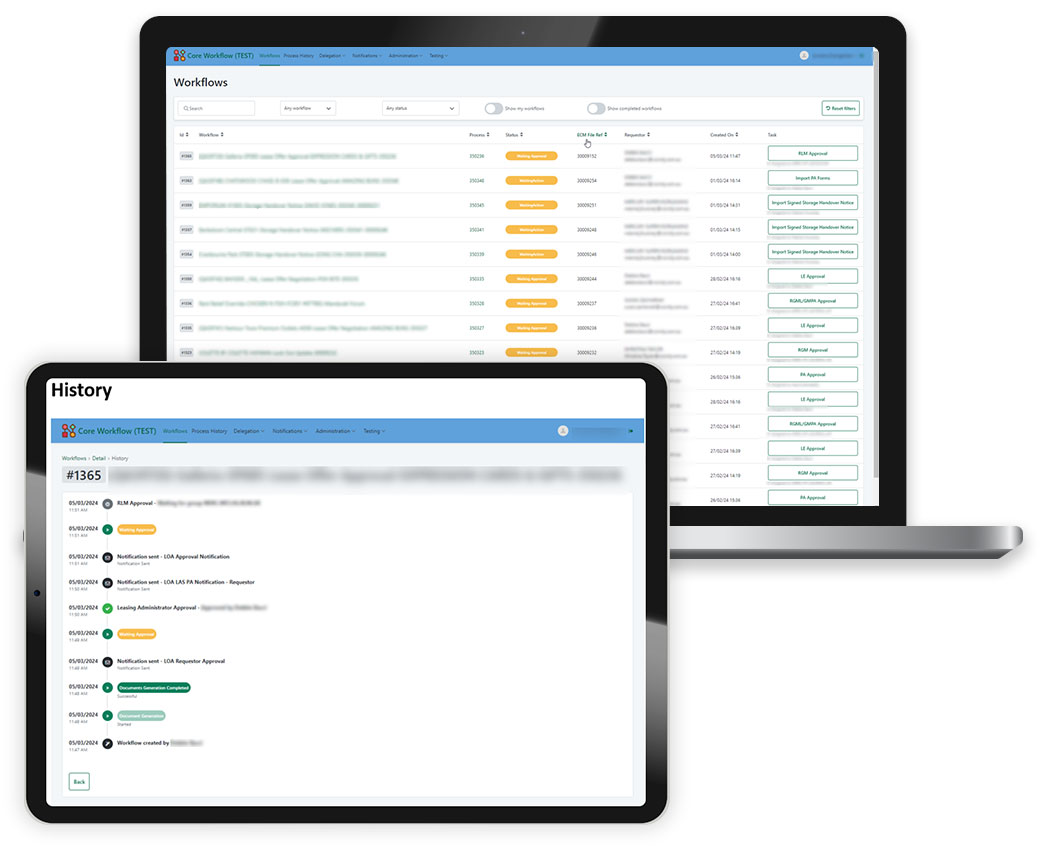to build workflow app
from the PhoenixDX team

Modern enterprise architecture allows Vicinity to implement custom workflows to meet specific business requirements without compromising its core systems.
Vicinity is a property management company that owns and manages some of Australia’s most recognisable and loved retail destinations, including the iconic Chadstone in Melbourne and the Queen Victoria Building in Sydney. The organisation has 60+ retail assets under management, with over 7000 retail tenants and 400+ million annual customer visits.

The company had been managing its lease offer negotiation and CAPEX processes via complex, highly customised, manually coded workflows incorporated into its document management system, Documentum. Vicinity was advised that the next release of the Documentum system would no longer support their JavaScript workarounds. The time was right for the company to modernise their solution architecture, so Vicinity sought a new and better way of delivering these mission-critical workflow processes.

Using the OutSystems platform, Vicinity developed the Core Workflow application for their lease offer negotiation and CAPEX approval processes in just 8 weeks. Built with the help of PhoenixDX, the application separates these workflows out of Documentum and allows them to be managed by a team rather than an individual. It seamlessly integrates the workflows with the company’s document management system and its Salesforce CRM, ERP (JD Edwards), enabling these systems to focus on what they do best. Given that Vicinity has other core systems in place, such as SalesForce and ServiceNow, this modern approach to the company’s enterprise architecture allows Vicinity to implement custom workflows that meet its specific business requirements independently and without the need to customise any of these core systems, especially when none of these core systems are best suited for a use case like this.
Level 32, 101 Miller Street
North Sydney NSW 2060
Level 35, 477 Collins Street
Melbourne VIC 3000
Level 27, 32 Turbot St,
Brisbane City QLD 4000
Level 24, PSE Tower BGC
Taguig, 1634 Philippines
Level 32, 101 Miller Street
North Sydney NSW 2060
Level 35, 477 Collins Street
Melbourne VIC 3000 Australia
Level 27/32 Turbot St,
Brisbane City QLD 4000
Level 24, PSE Tower
Bonifacio Global City, Philippines
Level 32, 101 Miller Street
North Sydney NSW 2060
Level 35
477 Collins Street
Melbourne VIC 3000 Australia
Santos Place
Level 27/32 Turbot St,
Brisbane City QLD 4000
Level 24,
Manila 1634
Metro Manila Philippines
Level 32, 101 Miller Street
North Sydney NSW 2060
Work club Olderfleet
Level 35
477 Collins Street
Melbourne VIC 3000
Santos Place
Level 27/32 Turbot St,
Brisbane City QLD 4000
Philippine Stock Exchange Tower BGC, Level 24,
Manila 1634
Metro Manila Philippines
We acknowledge the Traditional Owners of the land where we work and live. We pay our respects to Elders past and present. We celebrate the stories culture and traditions of Aboriginal and Torres Strait Islander Elders past and present of all communities who work and live on this land.
© 2025 PhoenixDX
AN ALAN ALLMAN ASSOCIATES COMPANY